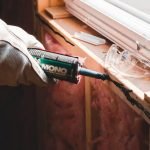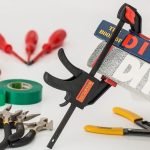
A leaky toilet is actually pretty common and it’s not difficult to remedy. So begin your journey into toilet freedom now.
Check the float and inlet valve
– Open the tank. If the water level is above the overflow tube, the problem could very well be attributed to the float or inlet valve. When the float rises with the level of the water, the inlet valve is then informed when to shut off. If this doesn’t work, the water never shuts off and spills into the overflow tube and then into the toilet bowl.
– To make sure all this works properly, flush the toilet, and, as the water begins to rise, lift the rod that holds the float. If the water stops, the inlet valve is in working order and the problem is actually with the float.
Adjust the float
– There is a screw at the top of the fill valve (next to the overflow tube, aka ballcock) that allows you to adjust the level of the float. With it, you can reduce the level that the water can rise in the tank. If you can’t get this to correct the problem, the float is most often the cause.
– If the float has a hole and lies too low in the water, it will never be able to trip the inlet valve. Inspect the float to make sure it is in working order. If it is not, a new rod and float are inexpensive (like most plumbing fixtures) and easy to replace.
Shut off the water
– If you’ve tested this far and the water still rises too far, you’ve got a problem with the ballcock (at the top of the fill valve). You could replace the ballcock itself, but it’s actually easy to replace the entire assembly.
– In order to do that you need to turn off the water supply to the toilet. The shutoff valve is located on the wall behind the toilet near the floor. Once this is completed, flush the toilet and hold down the handle to remove most of the water from the tank. You can get rid of most of the excess water with a large sponge.
Replace the assembly
– Disconnect the supply line that connects the ballcock at the base of the tank (it’s the only line coming out of the toilet. It’s connected to the wall). Use slip joint pliers to loosen the nut.
– After the nut is off, push the assembly up from the bottom of the tank (where the supply line used to be).
– Drop the new ballcock assembly into place. Tighten the nut using slip joint pliers. Be sure not to over-tighten the nut because you could crack the tank. Then reattach the supply line.
– Once it’s all in place, clip the new refill tube into place. Then turn the water back on.
Check the flapper
– If you’ve made it this far and none of these are the issue, then you’ve got a problem with your flapper. To test this, you’ll want to turn off the water and wait to see whether the water level drops significantly. If after 15 minutes you notice that it has dropped significantly, the problem could be that the flapper chain is too tight, which would prevent the flapper from dropping all the way to the seat. It could also be a leak in the flapper.
Replace the flapper
– You’re going to need to drain the tank again. Same as before, turn off the water and flush the toilet, making sure to hold down the handle. There will most likely be some excess water, but there’s no need to worry about it.
– Once that’s done, wipe the flapper seat (sits underneath the flapper) with a clean cloth to get rid of debris. Then check it for cracks or splits.
– Now you’ll want to check the flapper for splits, cracks, or tears, and that it sits snugly against the seat. If it is damaged, pull it off and replace it with a similar one.
Guest Post By:
Diane Kuehl is a home improvement professional and owner of DIY Mother. She lives in Springfield, Illinois with her husband and two kids.






